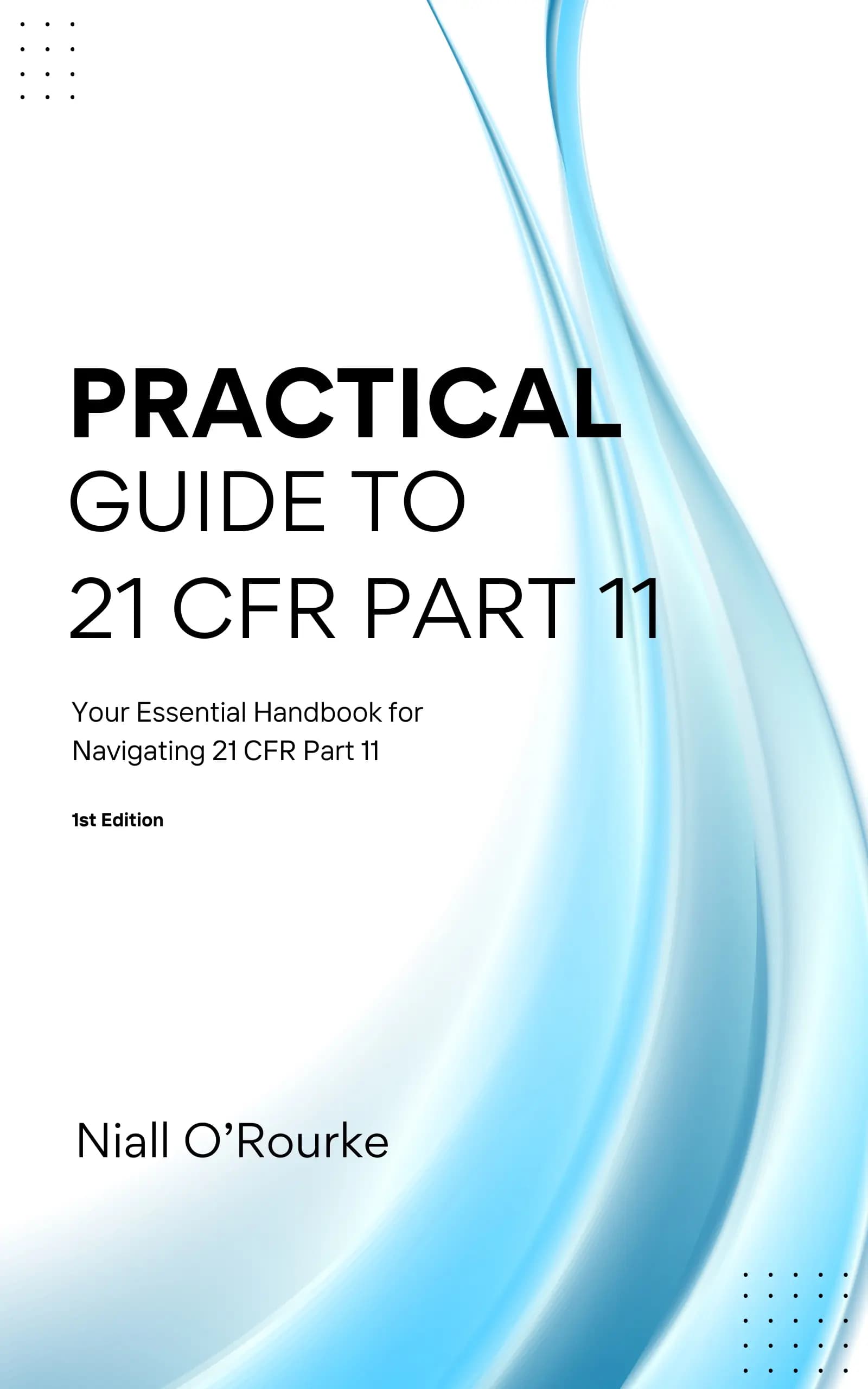Practical Guide to 21 CFR Part 11
Your Essential Handbook for Navigating 21 CFR Part 11

About the Author
Computerised System Validation (CSV) Engineer | Software Developer | Author
CSV Engineer in Bio-Pharma, full-stack developer, and author of "A Practical Guide to 21 CFR Part 11." I build web apps like this one and share practical insights for engineers. Follow me below on social media for interesting, hands-on content!
What You Will Learn
Navigate the complexities of 21 CFR Part 11 with practical guidance and actionable strategies.
Detailed guidance on controls for closed and open systems, including validation, audit trails, and record protection.
Understanding the requirements for electronic and digital signatures, with practical steps for implementation.
Best practices for managing system documentation, user access, and backups, with an emphasis on maintaining data integrity.
Examples of essential system requirements to ensure compliance with Part 11.
What Readers Are Saying
An invaluable resource for anyone working with computerised systems in pharma.
Conor
Quality Assurance
Clear, practical, and comprehensive guide to Part 11 compliance.
Eduardo
Automation Engineer
This book has become our team's go-to reference.
Emily
Validation Specialist
Free Resources
Download these complementary resources to enhance your understanding of 21 CFR Part 11.
This free PDF gives you a quick, clear summary of my book. It highlights the key insights, main ideas, and practical takeaways—everything the full book builds up to. Feel free to share with others.
This guidance document was written and issued by the FDA and provides insights into their current thinking on the topic.
A practical PDF summary of useful CMD commands commonly used when executing Installation and Operational Qualification (IOQ) protocols.
Book Excerpts
Get a glimpse of the insights and practical guidance you'll find in the book.
“The requirement for audit trail entries to be timestamped inherently means that the system time must be accurate.”
“The best way to ensure this is to synchronize your system time with a reliable time source. This can be done automatically or manually. Additionally, account for daylight saving time if it is applicable in your region. If you choose the manual method, you may need to regularly resync your system time with a known good time source (e.g., every two weeks) depending on the extent of time drift.”
— Section 4.1.6: “Time-Stamped Audit Trails”
Frequently Asked Questions
Ready to Master 21 CFR Part 11?
Join pharmaceutical and biotech professionals who are using this guide to implement effective compliance strategies.